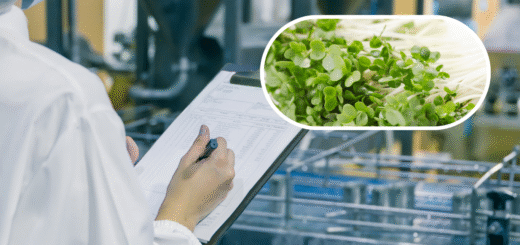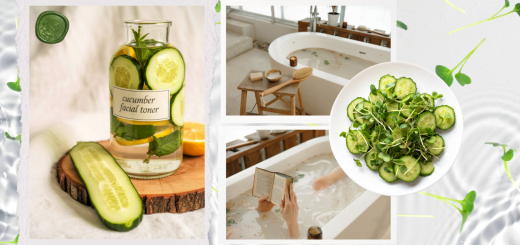Ideal temperature conditions for growing microgreens

In previous articles, we’ve discussed several factors that influence the cultivation of microgreens, such as planting trays, light, humidity, watering frequency, substrate, and one of the most relevant and decisive factors we’ll focus on today: temperature.
Temperature is one of the most critical factors, both for germination and growth.
Below, we analyze the optimal temperature range for growing microgreens, what happens outside those ranges, and how to apply this knowledge according to your growing space.
Optimal temperature ranges for growing microgreens
According to several studies, microgreens grow best in moderate temperature ranges. For example, the Penn State Extension website indicates that the ideal air temperature for growing microgreens is between 15 and 21°C, and that germination is favored when the substrate or growing medium is maintained between 15 and 24°C.
Another specialized site, Microgreens World, suggests that most microgreens grow optimally when the temperature stays around 15 – 24°C.
In a more technical study, experiments with microgreens grown in coconut fiber used air temperatures between 18 and 24°C.
Therefore, it can be said that a general optimal growing range lies roughly between 15 and 25°C, although, as we’ll see later, this may vary depending on the species.
Consequences of inadequate temperature for growing microgreens
When the temperature is too low, germination slows down and growth becomes slower. Some studies indicate that increasing the temperature from 14°C to 22°C can reduce the time to harvest by 35 – 40%.
On the other hand, if the temperature is too high, problems such as reduced nutritional quality may arise. Some studies report that temperatures above 20°C can decrease the nutritional quality of microgreens.
Likewise, during post-harvest storage, higher temperatures accelerate deterioration. In a study with mustard microgreens, storing them at 20 – 25°C made the product unusable after just one day.
Practical application
• During germination: keep the growing medium (substrate or tray) between 15 and 22°C to promote uniform sprouting.
• During active growth (until harvest): maintain air temperatures between 18 and 25°C, avoiding sharp day night variations that can stress the plants.
• Environmental control: use heating in winter or ventilation in summer to stabilize temperature.
• In multilayer or vertical rack systems: monitor the temperature in upper layers, since heat tends to accumulate there. Installing ventilation or air conditioning is recommended.
• During post harvest storage: apply low temperatures (for example, between 5 and 10°C) to extend shelf life, avoiding temperatures above 20°C, which accelerate spoilage.
Variations by species of microgreens
Not all microgreen species react the same way to temperature. Factors such as substrate, lighting, and ventilation also play a role.
Therefore, it’s advisable to conduct growing tests for each species, adjusting the temperature range according to its response.
Although most thrive between 15 and 25°C, each species presents variations that affect germination speed, color, texture, and flavor. Understanding these differences allows you to adjust the thermal environment to achieve the best yield.
Here are some examples…
• Broccoli: Ideal temperature: 18 – 22°C. Germinates quickly within this range. Below 15°C, growth slows; above 25°C, stems may become thin and leaves yellowish.
• Radish: Ideal temperature: 18 – 24°C. One of the most heat-tolerant species. Moderately high temperatures (22 – 24°C) accelerate germination. Below 16°C, growth slows down.
• Sunflower: Ideal temperature: 21 – 25°C. Prefers slightly higher temperatures than average. Below 18°C, early development slows; above 27°C, plants may wilt.
• Wheat: Ideal temperature: 16 – 21°C. Prefers cooler conditions. Excess heat (above 24°C) may promote fungal growth. Ideal for temperate climates or indoor setups with light cooling.
• Mustard: Ideal temperature: 18 – 22°C. Above 24°C, it develops a stronger, spicier flavor. Around 20°C, it achieves the best balance of color, texture, and flavor.
• Basil: Ideal temperature: 22 – 26°C. One of the most heat-demanding species. Below 20°C, germination becomes irregular and growth slow. At 24 – 25°C, maximum germination rate and the most intense color are achieved.
In conclusion, temperature control is a key factor for adjusting the flavor, texture, and color of each microgreen variety. While species like broccoli and mustard adapt well to temperate climates, others such as sunflower or basil require warmer conditions. In mixed crops, where several species are grown in the same tray, it’s best to maintain an intermediate temperature, between 20 and 22°C.
Ultimately, temperature is a fundamental aspect, and maintaining a stable environment between 15 and 25°C during germination and growth generally ensures excellent results.
As always, we hope you found this article useful. See you next time!
Carlota
Sources
Amitrano, C., Paglialunga, G., Battistelli, A., De Micco, V., Del Bianco, M., Liuzzi, G., Moscatello, S., Paradiso, R., Proietti, S., Rouphael, Y., & De Pascale, S. (2023). Defining growth requirements of microgreens in space cultivation via biomass production, morpho-anatomical and nutritional traits analysis. Frontiers in Plant Science, 14, 1190945. https://pmc.ncbi.nlm.nih.gov/articles/PMC10394706/
Dayarathna, N. N., et al. (2023). Effect of storage temperature on storage life and sensory attributes of packaged mustard microgreens. Life (Basel), 13(2), 393. https://pmc.ncbi.nlm.nih.gov/articles/PMC9966302/
Lone, J. K., Pandey, R., & Gayacharan. (2024). Microgreens on the rise: Expanding our horizons from farm to fork. Heliyon, 10(10), e25870. https://pmc.ncbi.nlm.nih.gov/articles/PMC10881865/
Dubey, S., et al. (2024). Microgreens production: Exploiting environmental and … Plants, 13(18), 2631. https://www.mdpi.com/2223-7747/13/18/2631
Di Gioia, F., & Penn State Extension. (2023, March 14). Growing microgreens. Penn State Extension. https://extension.psu.edu/growing-microgreens
Natural Yield. (2023, July 2). The significance of humidity and temperature control in microgreens cultivation. https://naturalyield.com.au/the-significance-of-humidity-and-temperature-control-in-microgreens-cultivation/







